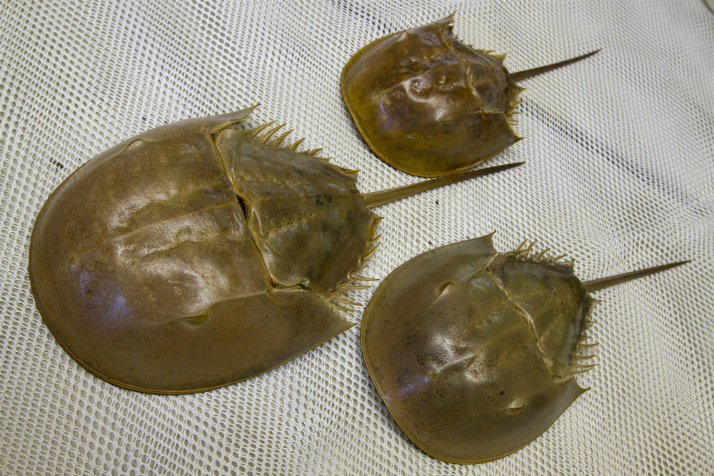By Les Harrison
The pace of 21st Century life continues to accelerate unabated. There seem to be an unending stream of new, improved, and enhanced products and services at every sunrise.
The stress and expense it takes on the citizenry is difficult to gauge and measure. The adjustment may be as simple as a change in a food products package, or as complicated as widening U.S. 319 through Crawfordville.
Heraclitus, a resident of ancient Ephesus who was known as the weeping philosopher, observed 2,500 years ago that “Nothing endures but change.”
While this may be true to some greater degree, there are some perpetual consistencies, at least from a human perspective.
One such consistency lives in the salt water adjacent to Wakulla County. Horseshoe crabs are marine arthropods which live in the shallow depths on the soft sandy bottoms common to the area.
There origins date back about 500 million years ago to the Paleozoic Era where their ancestors were contemporaries of the long extinct trilobites. Today only four species of horseshoe crabs remain, one of which lives here.
Limulus polyphemus, as the Atlantic horseshoe crab is known, are found in the Gulf of Mexico, the Atlantic coast of North American and occasionally in Europe. The three remaining species are restricted to Asia.
Curiously, these living fossils are more closely related to spiders and ticks than crabs, which have only six legs.
Horseshoe crabs have five pairs of legs used for walking, swimming, and moving food into its mouth.
Each leg has a claw at the tip, except for the last pair. They have a leaf-like structure at their terminus used for propelling the horseshoe crab across the sandy bottoms.
Horseshoe crabs have three main parts to their body comprised of the head, the abdomen and the tail. Its shell is smooth and shaped like a horseshoe which is reflected in its common name.
Color ranges from greenish grey to dark brown. As is common in more primitive creatures, females are typically larger than the males and may grow up to two feet in length.
The long rigid tail is used for directional steering, but can be employed to right the animal if turned upside down by rough waves. Unlike stingrays, the tail does not contain venom bathed barbs used for defensive purposes.
An unlucky horseshoe crab with a broken tail can be quickly beached. There it becomes susceptible to a slow death baking in the sun or quick predation from birds or animals living close to the shore.

Like true crabs in the Gulf of Mexico, the entire body of the horseshoe crab is protected by a hard carapace or shell. Somewhat different than the exoskeleton of terrestrial insects, this covering is both structural and defensive in purpose.
During mating season the female can lay between 60,000 and 120,000 eggs, most in batches of a few thousand at a time. The eggs take about two weeks to hatch, but shore birds eat most before they hatch.
For millions of years these creature have been found on the ocean floor searching for marine worms and mollusks, their main food.
Occasionally, small fish join the limited menu selections.
Maybe the key to a long, long existence is consistency, even in the 21st Century.
 0
0
